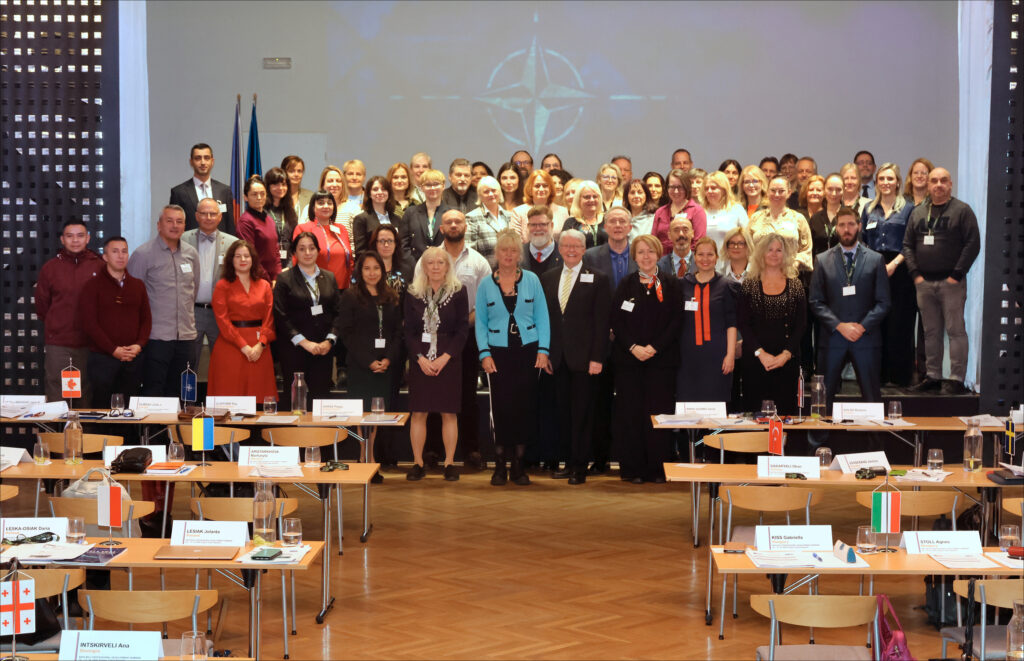
Day 1
- BILC information and update (BILC Secretariat)
- The Relationship between General Language Proficiency and Performance on Language for Special Purposes (LSP) tasks, Dr. Ray Clifford, USA
- From Learners’ Needs to Positive Attitudes – Can CLIL Work Miracles?, Katri Sirkel, EST
- EGP and ESP Training at the AAFLI, Jürgen Kotzian, AUT
- English for Hydrography – vocabulary course materials. The intricacies of creating an ESP course for students, Daria Łęska-Osiak, POL
- (Un)orthodox uses of AI in Teaching and Learning English, Jan Vosáhlo, CZE
Day 2
- Leveraging Artificial Intelligence for English Language Teaching, Lela Khubuluri, GEO
- Smart AI in Language Education: Merging Tech Savvy with Human Touch, Jolanta Lesiak, POL
- Hologram Technology in Language Learning, Stephen Haughey, SWE
- Inventing Future in Changing Times – Overcoming the Fear of Innovation and Change, Emilie Cleret, FRA
- New Challenges in Military Language Education: Czech Perspective, Vladan Holcner, CZE
Day 3
- Call for Shift in (Military) Language Education, Dr. Gabriella Kiss, HUN
- Language Training in the Armed Forces of Ukraine: Meeting ESP Purposes in Wartime, Marharyta Aristarkhova, UKR
- Integrating Feedback into Course Content and Training Strategies, Julie Dubeau and Jana Vasilj-Begovic, CAN
- Formative assessment as a tool for adapting to learners needs and bolstering learners attitude and motivation, Borjana Soldo, HRV
- Maximizing the Benefits of Local Language Immersions, Dr. Robert Savukinas and Detlev Kesten, USA
Day 4
- Learning when doing; some approaches, Jérôme Josserand, SWE
- AI in reading comprehension item development: boon or bane, Dr. Maria Luisa Alía Alberca, ESP
- Creating Self-Study Materials for Productive Skills (Writing and Speaking STANAG Levels 1 and 2), Anika Dähn, DEU
Workshops
- Dealing with Dyslexia in Teaching and Testing, Mariamma Martin and Stephen Haughey, SWE
- Gamification, Christine Kelly, NDL
- Make it Make Sense (Redux) – Insights from applied linguistics research to improve grammar teaching, Eloy Romero Muñoz, BEL
- Managing Resistance to Change in the Face of Innovation, Dr. Edelmira Nickels, USA
- Sharing best practices in ESP training, Jürgen Kotzian, AUT
Digital posters
- ESP for Professional Communication_Two Skills, Two Models, Peggy Garza, USA
- Instructional Coaching, Anna Di Virgilio, ITA (poster)
- Teaching Practices that bolster positive learner attitudes, Ana Intskirveli, GEO
Summaries
- (Un)orthodox uses of AI in Teaching and Learning English, Jan Vosáhlo, CZE
- AI in reading comprehension item development boon or bane, Dr. Maria Luisa Alía Alberca, ESP
- Call for Shift in (Military) Language Education, Dr. Gabriella Kiss, HUN
- EGP and ESP Training at the AAFLI, Jürgen Kotzian, AUT
- From Learners’ Needs to Positive Attitudes – Can CLIL Work Miracles, Katri Sirkel, EST
- Instructional Coaching, Anna Di Virgilio, ITA
- Make it Make Sense (Redux) – Insights from applied linguistics research to improve grammar teaching, Eloy Romero Muñoz, BEL
- Managing Resistance to Change in the Face of Innovation, Dr. Edelmira Nickels, USA
- Sharing best practices in ESP training, Jürgen Kotzian, AUT
- Smart AI in Language Education _ Merging Tech Savvy with Human Touch, Jolanta Lesiak, POL
- Teaching Practices that bolster positive learner attitudes, Ana Intskirveli, GEO